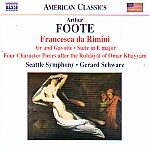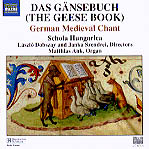

Arthur Foote’s music is pleasant, conservative, and often attractive. The best piece here is the 4 Character Pieces after the Rubaiyat of Omar Khayyam, where

Tenor Philip Langridge is today’s most thoughtful and musically adept interpreter of Britten’s songs, and this effort–traversing some of the composer’s most difficult and introspective

Tomás Bretón isn’t going to win any awards for originality, but his music is delicious. If you like all the usual late-Romantic “Spanishisms”–clicking castanets, glittering

I admit it was the cover that got my attention–first, the title, referring to an 1120-page manuscript collection containing the only existing original copies of

Gottlieb Wallisch is a clean and scrupulous Scarlatti pianist who obviously practiced these 18 sonatas to the bone. Yet the performances generally lack charm and

Michael Torke’s music tends to polarize listeners, a result of his determinedly colloquial style. There are passages in Jasper and An American Abroad that recall

If you’re a listener who’s already inclined to lend an open ear to performances of new American operas, then you likely have heard–and possibly were

Ildebrando Pizzetti’s Concerto dell’estate of 1928 (really a three-movement symphony) is one of the most attractive of all early 20th-century Italian orchestral works. It hasn’t

That Franz Schmidt’s 1899 Symphony No. 1 met with greater success than Mahler’s contemporaneous Symphonies Nos. 1-3 seems surprising to us today, until we consider

As you can see from the head note, there is more music here than just the ballets, not that I’m complaining. Many of these performances
![]()
